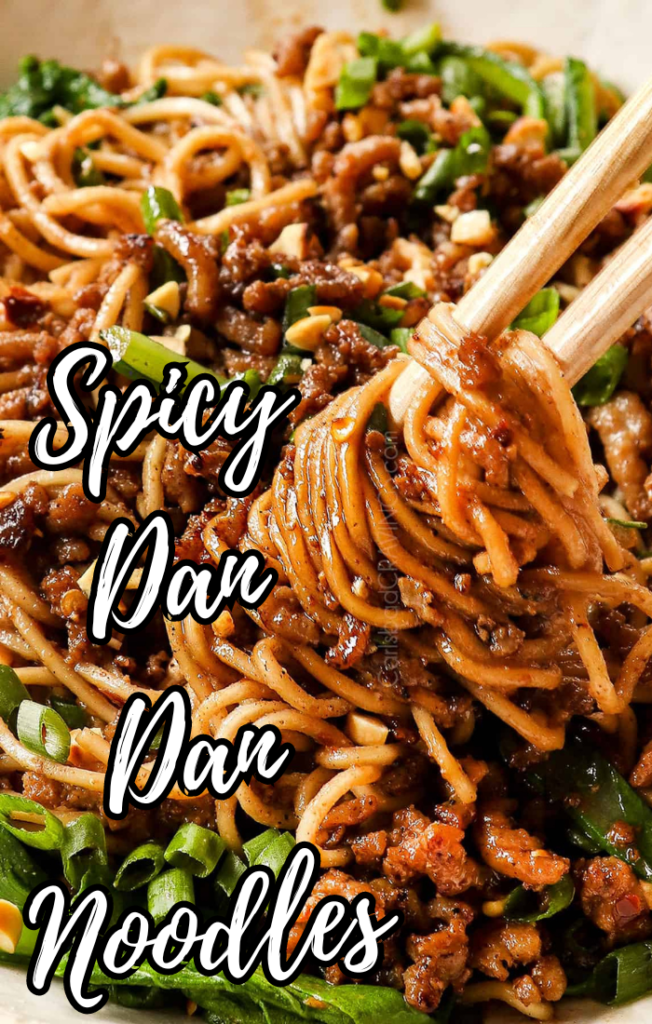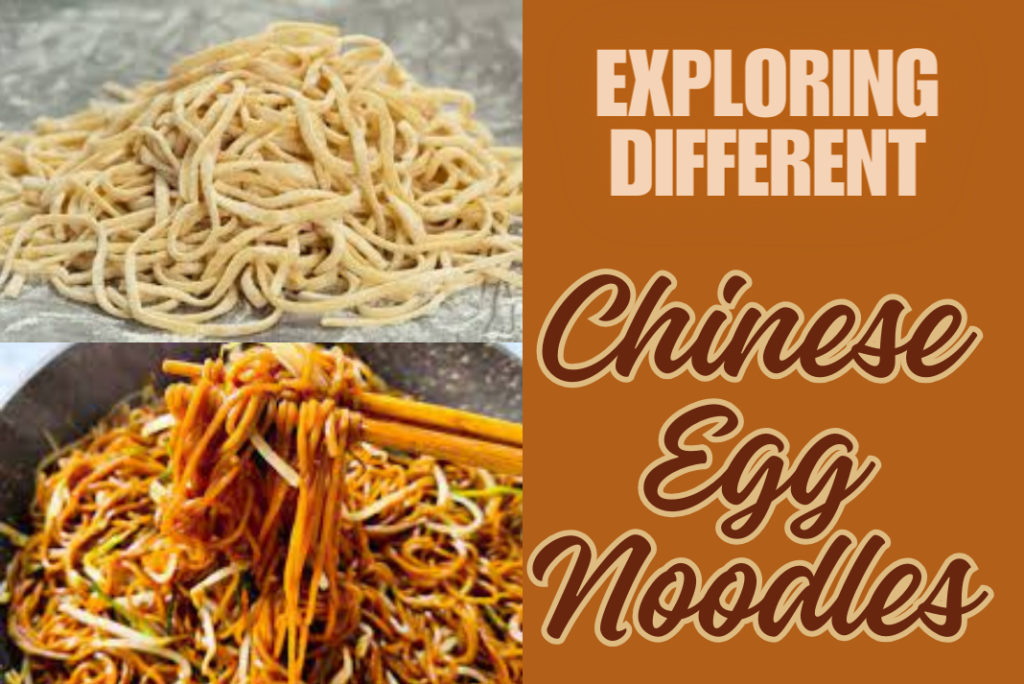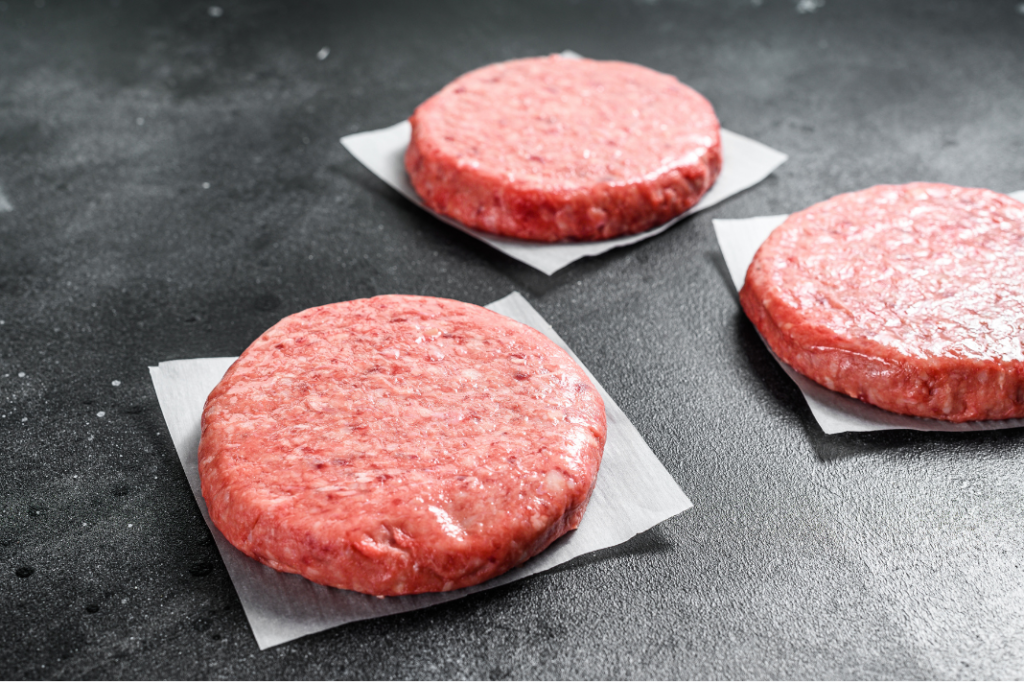Go on a culinary adventure as we dive into the delights of Chinese Egg Noodles. These versatile and flavorful fibers have become an integral part of Chinese cuisine, offering a variety of flavors and textures. In this insight, we’ll break down the different types of Chinese egg noodles, share interesting recipes featuring their different varieties, and offer valuable cooking tips so you’ll know the art of preparing these noodles if it keeps your mouth warm well at home. Get ready to up your culinary skills and taste the delicious nuances of Chinese sweet potato noodles!
Table of Contents
Types of Chinese Egg Noodles
Chinese egg noodles come in a variety of styles, each offering a unique and delicious flavor. Here are some popular varieties:
Lo Men Noodles: These are soft round noodles made with wheat flour and egg. It is often used in stews and absorbs flavor very well.
Chow Men Noodles: Crispy and pan-seared chow men noodles, add an interesting crunch to dishes. It’s often used in stir-fries and noodle-based casseroles.
Dan Dan Noodles: Originating from Sichuan cuisine, these noodles are known for their flavor and texture. It is usually served with pork chops and sweet sauce.
Shrimp Egg Noodles: These shrimp-based noodles add a wonderful seafood flavor to the dish. It is often used in soups or as a vegetable and protein stir-fry.
Hong Kong-style egg noodles: These thin, yellow noodles are versatile and can be served with soups, stir-fries, or cold salads. They have a slightly chewy texture.
Dao Xiao Mian (Knife-Cut Noodles): These noodles have a rustic, asymmetrical texture because they are cut by hand. It is often used in rich soups with broth.
E-fu noodles: These are thin, wide noodles with potatoes. Used frequently in Cantonese cuisine, it tastes delicious and looks great in stews or crusts.
Liangpi: These are wide thin noodles made with wheat or rice flour. Cold liangpi noodles are often served with a savory flavor and are often served with spicy dishes.
Cellophane noodles: Also known as glass noodles, they are made from cornstarch. When baked, it’s miles obvious and is regularly used in stir-fries and spring rolls.
Udon noodles: Despite their Japanese origins, udon noodles are extensively used in Chinese delicacies. They’re thick, and chewy, and work nicely in soups and stir-fries.
Whether you prefer them in soups, stir-fries, or cold salads, Chinese egg noodles offer a wide range of options to suit every palate.

Making Chinese Egg Noodles at Home
Making Chinese egg noodles at home is a rewarding culinary adventure, allowing you to savor the freshness and authenticity of this beloved staple. Follow these simple steps to create your own delicious Chinese egg noodles:
Ingredients:
- 2 cups all-purpose flour
- 2 large eggs
- 1/2 teaspoon salt
- Water (as needed)
Instructions:
Create the Dough:
- In a massive mixing bowl, integrate the all-motive flour and salt.
- Make a well in the center and crack the eggs into it.
- Gradually comprise the flour into the eggs, mixing well.
Knead the Dough:
- Once the aggregate starts offevolved coming collectively, transfer it to a floured floor.
- Knead the dough for approximately 10-15 minutes till it becomes easy and elastic.
- If the dough is too dry, add a bit of water; if it is too moist, add extra flour.
Rest the Dough:
- Form the dough right into a ball and cover it with a moist material.
- Let it relax for a minimum half-hour. This allows the gluten to relax and makes the dough easier to roll.
Rolling Out the Noodles:
- After resting, reduce the dough into smaller sections for less difficult managing.
- Take one segment and roll it into a thin sheet with the use of a rolling pin. Keep the floor floured to prevent sticking.
- Once rolled out, fold the sheet a few instances and reduce it into skinny strips to shape your noodles.
Cooking the Noodles:
- Bring a pot of water to boil, adding a pinch of salt.
- Drop the fresh noodles into the boiling water and prepare dinner for two minutes or until they waft to the floor.
- Remove the noodles and rinse them underneath bloodless water to forestall the cooking procedure.
Enjoy Your Homemade Noodles:
- Your homemade Chinese egg noodles at the moment are equipped to be loved for your preferred dishes.
- Toss them in a stir-fry, add them to soups, or create a noodle salad with fresh vegetables and your selected sauce.
Making Chinese egg noodles at home lets you customize the taste and texture to suit your options. Experiment with distinct flour sorts and thickness degrees to reap the appropriate noodles for your culinary creations.

Popular Chinese Egg Noodle Recipes
Discover the culinary wonders of Chinese egg noodles with these popular and delicious recipes:
Classic egg noodle filling:
Make a quick and filling meal by stirring Chinese egg noodles with a colorful blend of vegetables and proteins (such as chicken, pork, or tofu) Customize the ingredients and sauce, and enjoy noodles cooked flawlessly inside.
Egg Noodle Soup:
Turn Chinese egg noodles into a comforting soup simmered in a hearty broth with greens, vegetables and a craving for protein. Whether it’s traditional chook noodle soup or sweet and spicy ramen, this dish provides heat and nutrition.
Soy Sauce and Sesame Egg Noodles:
Elevate the mild Chinese egg noodles by tossing them in a rich combination of soy sauce, sesame oil, garlic and ginger. Garnished with green onions and sesame seeds for a delicious blue. This simple recipe showcases small but delicious flavors.
Spicy Dan Dan Noodles:
Indulge in the bold and very spicy flavors of Sichuan food with Dan Dan Noodles. This dish is a spicy and sweet sauce made with chili oil, Sichuan pepper, minced meat and lentils. Baked with Chinese potato noodles, it promises an array of flavors aimed at tempting your taste buds.
Cold Sesame Noodle Salad:
Enjoy Chinese potato noodles with a refreshing and cool salad. Toss the cooked noodles with sesame-based dressing, crunchy herbs and herbs. This recipe is perfect for hot days, offering interesting contrasts in ingredients and an explosion of flavors.
Pan-Fried Crispy Egg Noodles:
For the Chinese egg noodles, mix the soft bottom layer until the crispy layer forms a crispy, golden outer layer. Top with your favorite stir-fry or saucy mix of meats and vegetables for a unique and interesting twist on traditional noodle dishes.
Homemade Wonton Noodles:
Combine the art of Chinese potato noodles with the fun of making soft wontons. Serve these crunchy noodles with homemade wontons, bathed in fresh water. This recipe adds some wonderful elements to your noodle experience.
Each of these recipes offers a unique and delicious way to enjoy Chinese sweet potato noodles, demonstrating their versatility and flexibility to accommodate a variety of flavors and cooking styles Whether you prefer the easy in a stir fry or the comforting hot noodle soup, these dishes are like this Chinese egg noodles -You can taste the real content of this

Cooking Tips and Techniques
Noodle Selection:
Choose the right type for your dish, considering thickness and shape.
Boiling Technique:
Boil in salted water for the recommended time, aiming for “al dente” texture.
Quick Cooling:
Immediately cool boiled noodles in cold water to maintain texture.
Stir-Fry Prep:
Ensure a hot wok, toss noodles to prevent sticking, and add sauces gradually.
Crispy Noodles:
Pan-fry noodles in oil for a crispy texture, flipping for even cooking.
Sauce Absorption:
Add sauces gradually to allow noodles to absorb flavors without becoming soggy.
Flavor Customization:
Experiment with different sauces and seasonings for unique flavor profiles.
Garnishing Techniques:
Enhance dishes with fresh garnishes like green onions, cilantro, or sesame seeds.
Storage Tips:
Store leftovers in airtight containers, adding broth when reheating.
Creativity Encouraged:
Explore creative combinations, trying new ingredients and fusion flavors.
Common Mistakes to Avoid When Cooking Chinese Egg Noodles:
Overcooking:
Avoid boiling noodles for too long; aim for the recommended time to prevent mushiness.
Insufficient Water:
Ensure an ample amount of water for boiling to prevent noodles from sticking together.
Skipping Quick Cooling:
Immediately cool boiled noodles to prevent overcooking and maintain texture.
Neglecting Stir-Fry Basics:
Use a hot wok, toss noodles well, and add sauces gradually to avoid uneven distribution.
Underestimating Pan-Frying:
When pan-frying, flip noodles for even crispiness and prevent burning.
Sauce Overload:
Gradually add sauces to avoid overwhelming noodles and making them soggy.
Ignoring Flavor Balance:
Experiment with sauces and seasonings but be mindful of achieving a balanced flavor.
Forgetting Fresh Garnishes:
Elevate the dish by adding fresh garnishes for added flavor and visual appeal.
Improper Storage:
Store leftovers in airtight containers, adding broth when reheating to maintain moisture.
Sticking to the Basics:
Don’t shy away from creativity; explore different ingredients and techniques for unique dishes.
Embrace the richness of Chinese egg noodles, turning your kitchen into a canvas for creative and delicious culinary experiences.



